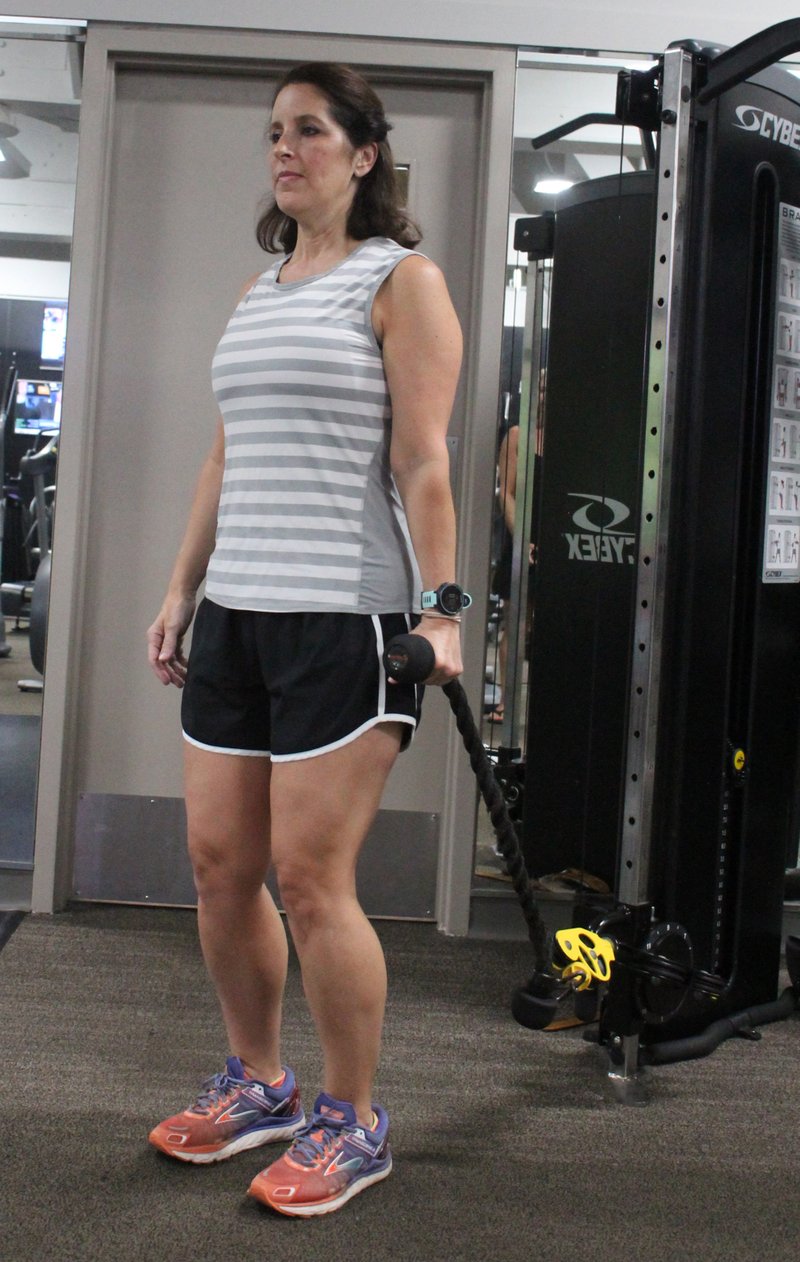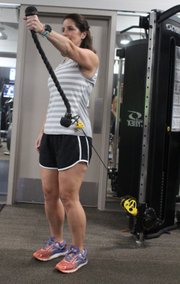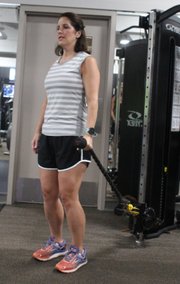Unilateral exercises can sometimes feel inefficient, given that one side of the body is at rest while another side is engaged. But there are a number of benefits to unilateral training that aren't necessarily obvious.
This week, I'll present a few key advantages of unilateral training and introduce a unilateral exercise that's easy to add to your routine.
The vast majority of strength training is done in a bilateral fashion. That is, either both legs or both arms are engaged at the same time, performing basically the same movement. Biceps curls, bench presses and triceps extensions are just a few examples of common bilateral exercises.
Part of the reason most people train bilaterally is balance. When both sides are working under the same resistance, the core muscles are able to engage minimally and still maintain balance. Whether the exerciser is trying to maintain balance while standing, sitting or lying down, the principle is the same.
Unilateral training challenges the notion that balance is a good thing. When resistance is only applied to one side of the body, force is generated to the core in an unequal fashion. Thus, the body's tendency is to lean toward the side of the resistance due to the imbalance. For example, picking up a heavy suitcase with the right hand forces an individual to lean to the left to stay upright while walking.
For everyday activities, unilateral resistance is generally not a good thing. No one would want to walk through an airport holding onto the heavy suitcase while leaning to the left. It's uncomfortable and can present some injury risks. However, unilateral training can be an effective way to engage the core in a safe and controlled fashion.
Exercises like shoulder presses, shoulder raises, biceps curls and other movements typically performed with lighter resistance can be great options for unilateral training. The amount of resistance is low enough that the risk for injury is also low, but the training effect can still be realized.
The Single Arm Front Raise With Rope is an easy way to try out unilateral training and begin feeling the core engagement that occurs with this method.
1. Select a single rope and attach it to one side of a cable machine with the pulley at the lowest setting. Adjust the resistance to a very light setting, as you will have very little leverage for this movement.
2. Stand just to the right of the rope and grasp it with your left hand. Once you have your grip, your left thumb should be touching the ball at the end of the rope.
3. Keeping the knees and hips soft, slowly raise the left arm straight up in front of your body. Keep your left elbow straight and, for balance, place your right hand on your right hip.
4. Lift all the way up until the left arm is parallel with the floor, then slowly lower it back down to the starting position.
5. Do eight repetitions, then switch sides.
6. Perform two sets for each side.
If you keep the right hand on the right hip during this movement, slide the hand up and feel the obliques working. Even this small amount of resistance applied in a unilateral fashion really engages the core. It's a great way to train these muscles to become strong when everyday situations (thinking of that heavy suitcase) call for it.
This technique really is training for life.
Matt Parrott has a doctorate in education (sport studies) and a master's in kinesiology and is certified by the American College of Sports Medicine.
vballtop@aol.com
ActiveStyle on 08/28/2017


